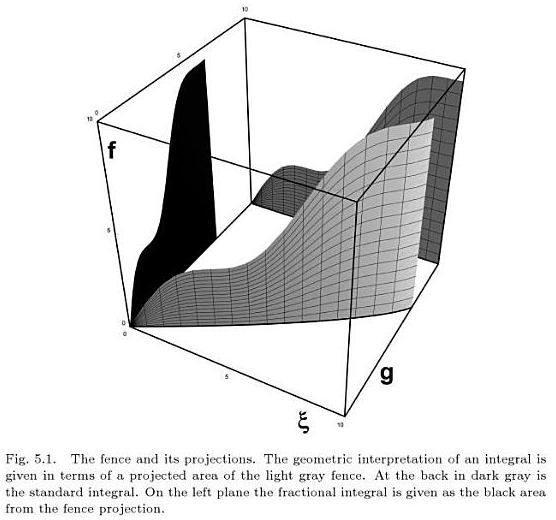For $f(x)=x$, the half-derivative of $f$ is $$\frac{d^{\frac{1}{2}}}{dx^{\frac{1}{2}}} x = 2 \sqrt{\frac{x}{\pi}} \;.$$ Is there some geometric interpretation of (Q1) this specific derivative, and, (Q2) of the half-derivative more generally? I have read that fractional derivatives are nonlocal, but it seems strange to me that integral derivatives can be described in terms of local geometry only, while fractional derivatives cannot be so described. This would suggest an odd discontinuity between, say, $d^{1}$ and $d^{1.01}$. This seems especially at odds with the many applications of fractional derivativesthe many applications of fractional derivatives, which (superficially) suggests continuity should reign.
I'd appreciate someone clearing up my elementary confusions—Thanks in advance!
Addendum (5Jan14).
@AlexR. found this geometric interpretation of
the fractional integral in Richard Herrmann's book,
Fractional Calculus: An Introduction for Physicists,World Scientific, 2011:

